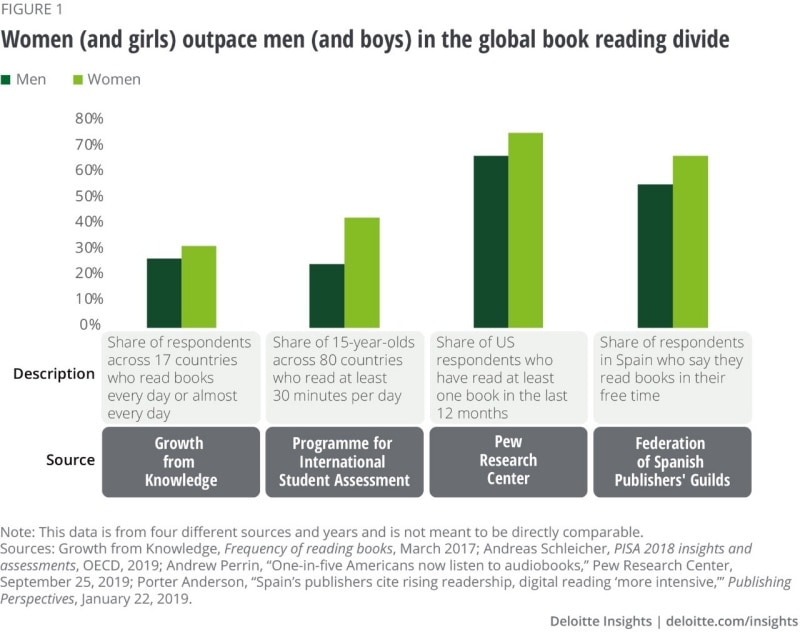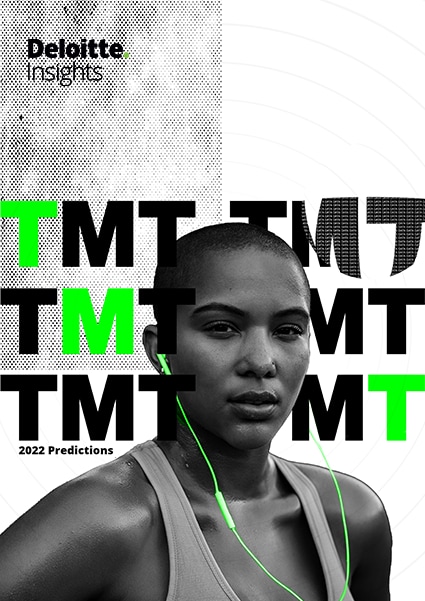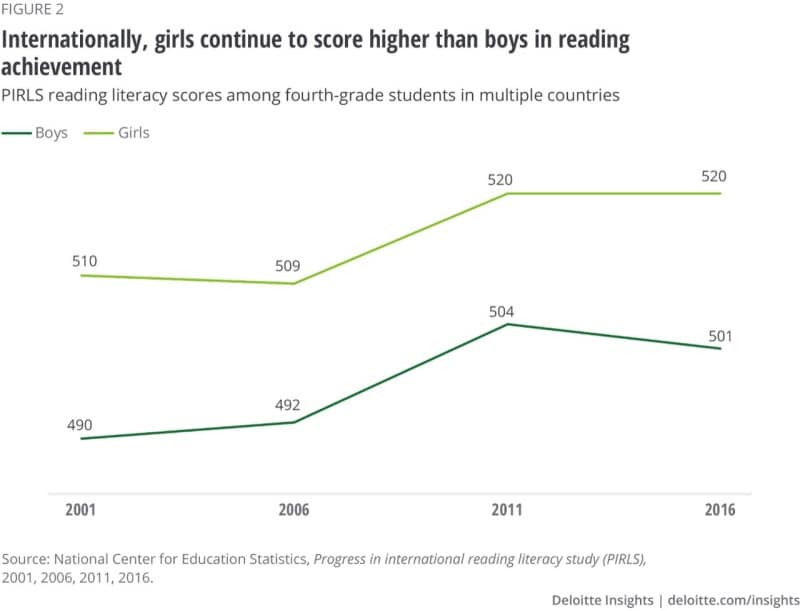The really bad news is that there is also a gender gap in reading ability and comprehension, perhaps unsurprising if boys and men are getting less practice. One global study found that fourth-grade girls had higher average reading achievement levels in almost all of the 50 countries surveyed than boys in the same grade—a trend that has held since 2001 (figure 2).8 We predict that this gender divide in ability isn’t going away, and won’t until boys and men start reading as much and as often as girls and women do.
Interestingly—and perhaps importantly—men and boys read fewer books written by women. A study by Nielsen Book Research found that, of the 10 bestselling male authors, readership was roughly evenly divided by gender, with 55% male readers and 45% female readers. In contrast, only 19% of the 10 bestselling female authors’ readers were male, compared to 81% female.9 Men also read fewer books with female protagonists than do women—a problem compounded by the fact that fewer books feature female protagonists overall. For example, in the top 100 children’s books, male characters (human and nonhuman) in leading roles outnumber female characters two to one.10
There is also a long history of women writers masking their gender—including the author of the wildly popular Harry Potter novels, Joanne Rowling, who writes under the gender-neutral moniker J. K. Rowling—in an effort to be taken seriously and attract a wider share of readers.11 (However, more recently, some male authors have done the same and adopted gender-neutral pen names, in hopes of gaining more credibility with women and increasing their female readership).12
Not only does reading fewer books hurt men and boys, but not reading books by and about women can hurt society. If female book characters are portrayed largely through the gaze of men, or with a male lens, this can reinforce a lack of understanding of, and discrimination against, underrepresented and non-male groups. Reading books, especially fiction, is related to social acuity, helping readers learn about other people and comprehend their motivations.13 When we read, we put ourselves in the characters’ shoes to see their points of view, fears, hopes, and experiences. For female authors and protagonists to be a closed book to many male readers can be unhelpful in an era where we strive for greater diversity, equity, and inclusion. Not to mention that capabilities developed by reading—including emotional intelligence, empathy, and imagination—are in high demand in the workplace and will likely be critical to employability in the future of work.14


















